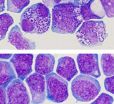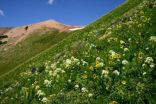(Press-News.org) Researchers of the Tobaco Control Unit of the Catalan Institute of Oncology (ICO) and the Bellvitge Biomedical Research Institute (IDIBELL) evaluated exposure to snuff smoke in nonsmokers before the entry into force of the first Spanish smoking ban and after the launch of the second law (2011 ) in the city of Barcelona.
Salivary cotinine
Cotinine is a nicotine derived substance that is used as a marker of exposure to snuff smoke in nonsmokers. Researchers at the ICO- IDIBELL measured the concentration of this substance in the saliva of those surveyed and found to have decreased by nearly 90 % between 2004 and 2012.
Law 28/2005 which entered into force in January 2006 partially prohibited the consumption of snuff in public. Five years later, in January 2011 , the second law of snuff (Law 42/2010 ) which extended the ban on smoking in all enclosed spaces such as bars and restaurants and some outdoor spaces such as hospital grounds came into force .
Less smoke at home
The researchers found no major differences by gender, age or education in cotinine concentrations in saliva. But significant differences in the perception that non-smokers have of their exposure to snuff in certain spaces before and after the entry into force of the laws are detected.
The perception of being exposed to smoke snuff in his spare time has decreased by 36.5 % among non-smokers. " This percentage was expected, considering that smoking in bars, restaurants and similar closed spaces was prohibited by the second law" explained Xisca Sureda, ICO- IDIBELL researcher and first author of the study .
Esteve Fernández, head of the study and head of the Tobaco Control Unit of the ICO-IDIBELL adds that "the most striking is that this perception at home has also decreased by 15 %". Fernandez explained that "this indicates that smokers who can not smoke in public places have also restricted snuff in the private space, they have become aware and have decided not to smoke indoors, as was suspected in some studies in other countries."
Overall, the perception of exposure to snuff among nonsmokers have fallen 25%.
INFORMATION:
Exposure to snuff smoke in non-smokers is associated with various adverse health effects . It is estimated that in 2004 , was responsible for 379,000 deaths from ischemic heart disease, 21,400 deaths from lung cancer, 165,000 deaths from respiratory infections and asthma in 36,900 worldwide. In Spain 1,228 deaths from lung cancer and ischemic heart disease 3,237 are attributed annually to exposure to snuff smoke of nonsmokers ..
Exposure to snuff smoke in non-smokers fell by 90 percent after the tobacco control laws
Spain has implemented 2 tobacco control laws
2014-03-18
ELSE PRESS RELEASES FROM THIS DATE:
In IBS, non-GI issues are more powerful than symptoms in patients' health perceptions
2014-03-18
BUFFALO, N.Y. – Social relationships, fatigue and other coexisting medical problems have a stronger effect on how patients with irritable bowel syndrome (IBS) rate their overall health than the severity of their gastrointestinal symptoms, a University at Buffalo study has found.
"Our findings suggest that in IBS patients and possibly patients with other diseases as well, health perceptions depend to a much larger extent on non-biomedical factors than those of us who are health care providers have ever suspected," says lead author Jeffrey Lackner, PsyD, associate professor ...
Sorption energy storage and conversion for cooling and heating
2014-03-18
In many industrialized countries, city skylines are dominated by imposing glass façades and skyscrapers made of concrete and steel. There is a drawback to these magnificent structures, though – they often get very hot in the summer, so they mostly need elaborate and costly air conditioning systems. And these already account for some 14 percent of Germany's annual energy consumption. Experts reckon that total cooling requirements in buildings will triple by 2020.
Cooling and heating using metal organic frameworks
Thermally driven cooling systems are one possible alternative ...
What factors contribute to sexual assault in the military and what can be done to prevent it?
2014-03-18
New Rochelle, NY, March 18, 2014–Recent high-profile cases have drawn attention to the problem of sexual assault in the U.S. military, the effects on survivors, and the actions and response of military leadership. Issues such as why there is more sexual assault in the military than in the general population, why it is under-reported, and what preventive approaches should the military adopt are explored in a provocative Roundtable Discussion published in the preview issue of Violence and Gender, a new peer-reviewed journal from Mary Ann Liebert, Inc., publishers. The article ...
Major breakthrough in developing new cancer drugs: Capturing leukemic stem cells
2014-03-18
This news release is available in French.
The Institute for Research in Immunology and Cancer (IRIC) at the Université de Montréal (UdeM), in collaboration with the Maisonneuve-Rosemont Hospital's Quebec Leukemia Cell Bank, recently achieved a significant breakthrough thanks to the laboratory growth of leukemic stem cells, which will speed up the development of new cancer drugs.
In a recent study published in Nature Methods, the scientists involved describe how they succeeded in identifying two new chemical compounds that allow to maintain leukemic stem cells ...
Getting rid of bad vibrations
2014-03-18
Whether you're looking at hairy spider legs, the alien-like faces of ants, or the spiky-looking surfaces of pollen – a scanning electron microscope delivers high-resolution images that are rich in detail. But you can't get perfect images unless you protect the microscope from vibration. If someone walking across the room or an elevator going up and down between nearby floors makes the table shake, you're unlikely to get good results. The simplest way to quell vibrations is to put the microscope on a granite base – a stone so heavy that it dampens vibrations occurring at ...
Who's afraid of math? Study finds some genetic factors
2014-03-18
COLUMBUS, Ohio – A new study of math anxiety shows how some people may be at greater risk to fear math not only because of negative experiences, but also because of genetic risks related to both general anxiety and math skills.
The study, which examined how fraternal and identical twins differ on measures of math anxiety, provides a revised view on why some children – and adults – may develop a fear of math that makes it more difficult for them to solve math problems and succeed in school.
"We found that math anxiety taps into genetic predispositions in two ways: people's ...
Suppressing unwanted memories reduces their unconscious influence on behavior
2014-03-18
Researchers part-funded by the Medical Research Council (MRC) have shown that, contrary to what was previously assumed, suppressing unwanted memories reduces their unconscious influences on subsequent behaviour, and have shed light on how this process happens in the brain.
The study, published online in PNAS, challenges the idea that suppressed memories remain fully preserved in the brain's unconscious, allowing them to be inadvertently expressed in someone's behaviour. The results of the study suggest instead that the act of suppressing intrusive memories helps to disrupt ...
Lessons from a meadow
2014-03-18
For almost 40 years, field scientists strapped on cross-country skis, shouldered backpacks with supplies and set out over three miles of snow and rocks to a field station by a meadow high in the Rocky Mountains as soon as the snow began melting. Every other day, they counted each flower they found, identified the plant it belonged to and kept meticulous records of their observations.
Their observations provide the longest-running scientific study of its kind and tell a story of biological change that teaches scientists new lessons about phenology – the timing of biological ...
Supplements not associated with reduced risk of cardiovascular disease in elderly
2014-03-18
Bottom Line: Daily dietary supplements of omega-3 polyunsaturated fatty acids (also found in fish) or lutein and zeaxanthin (nutrients found in green leafy vegetables) were not associated with reduced risk for cardiovascular disease (CVD) in elderly patients with the eye disease age-related macular degeneration.
Author: The writing group for the Age-Related Eye Disease Study 2 (AREDS2) clinical trial.
Background: Diet studies have suggested that increased intake of fish, a source of omega (ω)-3 fatty acids, can reduce rates of cardiac death, death from all other ...
Study finds high utilization of neuroimaging for headaches despite guidelines
2014-03-18
Bottom Line: Neuroimaging for headaches is frequently ordered by physicians during outpatient visits, despite guidelines that recommend against such routine procedures.
Author: Brian C. Callaghan, M.D., M.S., of the University of Michigan Health System, Ann Arbor, and colleagues.
Background: Most headaches are due to benign causes, and multiple guidelines have recommended against routine neuroimaging for headaches.
How the Study Was Conducted: The authors analyzed National Ambulatory Medical Care Survey data for all headache visits for patients 18 years or older ...
LAST 30 PRESS RELEASES:
Making lighter work of calculating fluid and heat flow
Normalizing blood sugar can halve heart attack risk
Lowering blood sugar cuts heart attack risk in people with prediabetes
Study links genetic variants to risk of blinding eye disease in premature infants
Non-opioid ‘pain sponge’ therapy halts cartilage degeneration and relieves chronic pain
AI can pick up cultural values by mimicking how kids learn
China’s ecological redlines offer fast track to 30 x 30 global conservation goal
Invisible indoor threats: emerging household contaminants and their growing risks to human health
Adding antibody treatment to chemo boosts outcomes for children with rare cancer
Germline pathogenic variants among women without a history of breast cancer
Tanning beds triple melanoma risk, potentially causing broad DNA damage
Unique bond identified as key to viral infection speed
Indoor tanning makes youthful skin much older on a genetic level
Mouse model sheds new light on the causes and potential solutions to human GI problems linked to muscular dystrophy
The Journal of Nuclear Medicine ahead-of-print tip sheet: December 12, 2025
Smarter tools for peering into the microscopic world
Applications open for funding to conduct research in the Kinsey Institute archives
Global measure underestimates the severity of food insecurity
Child survivors of critical illness are missing out on timely follow up care
Risk-based vs annual breast cancer screening / the WISDOM randomized clinical trial
University of Toronto launches Electric Vehicle Innovation Ontario to accelerate advanced EV technologies and build Canada’s innovation advantage
Early relapse predicts poor outcomes in aggressive blood cancer
American College of Lifestyle Medicine applauds two CMS models aligned with lifestyle medicine practice and reimbursement
Clinical trial finds cannabis use not a barrier to quitting nicotine vaping
Supplemental nutrition assistance program policies and food insecurity
Switching immune cells to “night mode” could limit damage after a heart attack, study suggests
URI-based Global RIghts Project report spotlights continued troubling trends in worldwide inhumane treatment
Neutrophils are less aggressive at night, explaining why nighttime heart attacks cause less damage than daytime events
Menopausal hormone therapy may not pose breast cancer risk for women with BRCA mutations
Mobile health tool may improve quality of life for adolescent and young adult breast cancer survivors
[Press-News.org] Exposure to snuff smoke in non-smokers fell by 90 percent after the tobacco control lawsSpain has implemented 2 tobacco control laws





